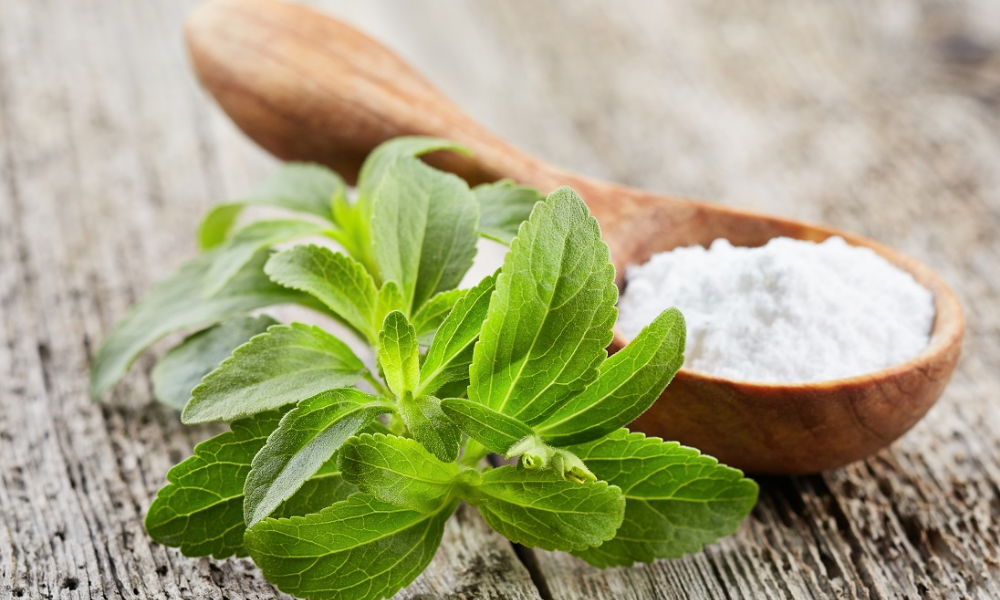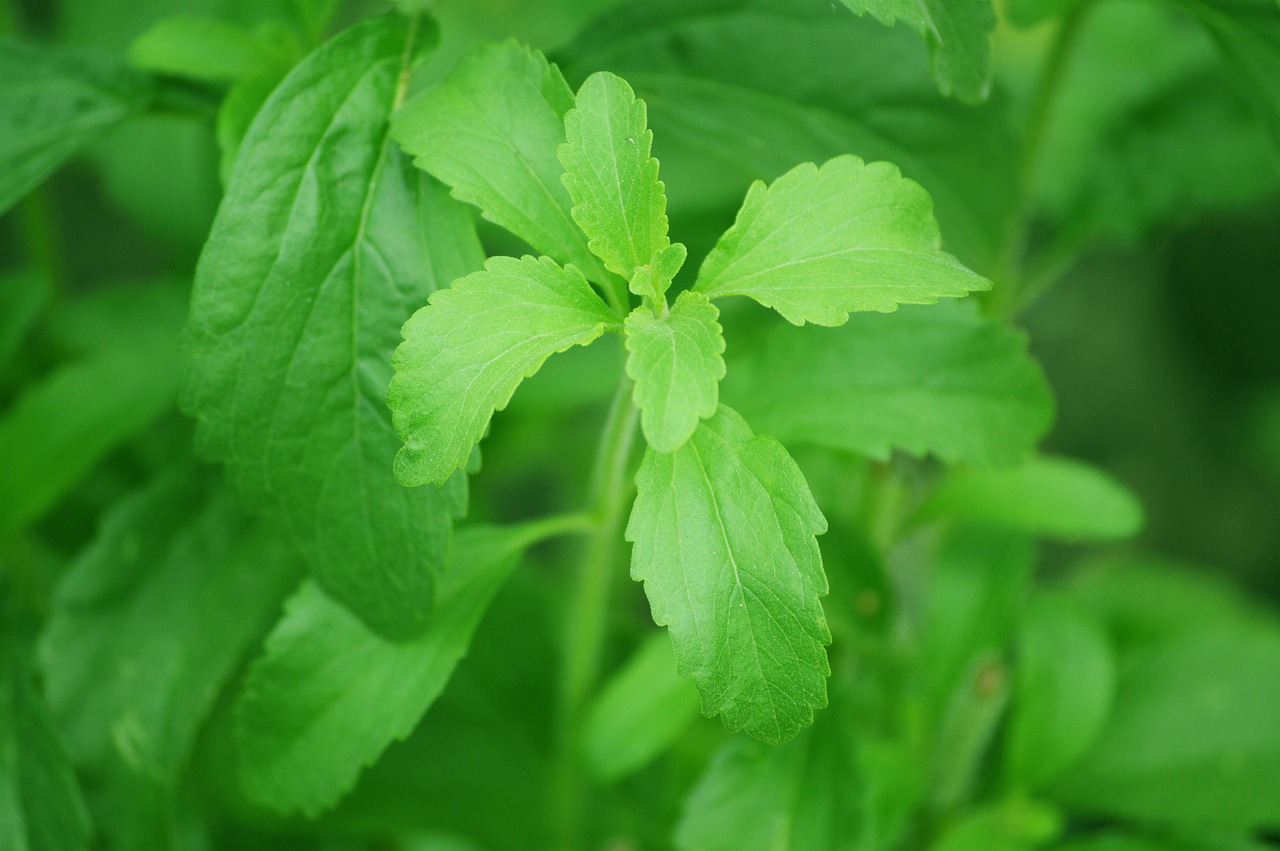You may have heard about using stevia in cooking, but what exactly is it? It is a natural sweetener that completely swaps out sugar. Stevia can survive temperatures of up to 400 degrees, unlike artificial sweeteners. You should try it for various reasons if you’ve been debating it. Learn more about this delicious sweetener by reading on. Also, make sure to look at the useful conversion table below.
What is Stevia?
The stevia plant leaves are used to make stevia, a sugar replacement. Although it is 100–300 times sweeter than table sugar, it is devoid of calories, carbs, and artificial chemicals.
Not everyone enjoys the flavor. While some individuals find stevia bitter, others say it tastes like menthol. To find out if you enjoy the flavor, try it in your morning coffee or on top of your porridge.
Stevia for Cooking
Before utilizing stevia in your cooking recipes, you should take your foods at lower degrees because stevia can dissolve at higher heat. Otherwise, the result won’t be as expected. Inserting a toothpick into your baked products is the greatest way to know when they are done. If the toothpick leaves a wet mark, the baking time is not yet correct.
Pure maple syrup works well in place of sugar while baking. If you choose flavored varieties, they frequently have refined sugar or corn syrup in them. For baking, you can use one cup of maple syrup instead of one cup of sugar. A quarter of the liquid should also be removed. Reduce the quantity of additional liquid used in the recipe as well. In baking recipes, honey can be utilized if not desired maple syrup.
Stevia in Cooking and Baking
Stevia is the perfect sugar substitute for many baking and cooking applications due to its remarkable stability against pH, salt, and high-temperature conditions. The same cannot be said for aspartame, saccharin, and other artificial sweeteners.
These artificial sweeteners are destroyed by heat, sometimes as low as 86° F or 30° C, which has well-known adverse effects. This is one of the reasons artificial sweeteners’ flavors alter considerably after being added to hot coffee or tea and left to stand. Salts, organic acids, and other natural sweeteners like sucrose, molasses, barley malt, honey, fructose, and sorbitol are all compatible with stevia. There is no fermentation, coloring, or precipitation.
Bread, rolls, casseroles, pies, and pastries can all use in addition to appetizers, drinks, soups, salads, and vegetables. However, yeast cakes that require the “body of sugar” to rise do not perform well with stevia. To make delicious low-sugar bread and pastries, one should experiment to determine the ideal ratio of Stevia (for sweeteners) and sugar (for the rising action).
What is Stevia’s Replacement?
Cooking with stevia is a fantastic method to cut calories and eliminate the aftertaste of table sugar. It weighs less than half of sucrose but almost doubles the sweetness. A half-tsp of stevia can be used in place of one teaspoon of ordinary table sugar. Because it doesn’t include artificial sugar alcohols, it is safe to use in baking and cooking. Stevia’s disadvantages include its higher price than sugar.
Instead of white sugar or brown sugar, you can replace the sugar alternative in recipes. If brown sugar is unavailable, you can alternatively substitute blackstrap molasses. It works well as a 1:1 sugar substitute in either case. Additionally, there are no calories in a serving. The erythritol in your recipes has a minty flavor, so use caution while cutting back on it.
Tips for Using Stevia in Baking
- Stevia works best in cookie recipes for crisp cookie varieties like shortbread. To replace sugar with stevia, a few modifications need to be performed. When preparing chewy cookie varieties, it is advisable to include some weight and moisture, such as pumpkin, applesauce, uncooked oats, or nut and seed butter. Otherwise, your cookies could become crumbly and dry.
- To retain the volume of the cake batter in the case of cakes, separate the egg whites and whisk them to firm peaks. When baking is complete, transfer the cake onto a cooling rack to preserve volume and prevent the cake from collapsing.
- To rise, yeast cakes require sugar. To make up for the shortage of sugars available to feed the yeast, merely replace half of the sugar and increase the amount of baking soda or baking powder. In any situation, set the oven’s temperature properly before using it.
What does Stevia’s Health Benefit?
In contrast to other sugar alternatives, stevia is natural. It is constructed from a leaf related to well-known garden blooms like asters and chrysanthemums.
Stevia leaves have long been used to sweeten beverages like tea in South America and Asia. Shops that sell healthy foods and supermarkets should carry liquid or powdered stevia. It’s probably in the section with baking supplies or healthy foods.
Sometimes, you can satisfy your sweet caffeine craving without adding calories or artificial sweeteners. Now available are diet cola soft drinks sweetened with stevia from major American soda producers. Stevia is also present in some flavored waters.
If you have diabetes, using stevia to sweeten yogurt or hot tea could help you avoid consuming more carbohydrates.
How do you Use Stevia?
Therefore, you’ve decided that it’s time to adjust your diet and eliminate the extra calories. You’re prepared to try stevia since you want to maintain a more natural diet. What happens after you add it to your tea? If you’re anything like me, you don’t know how else to utilize stevia than adding it to your coffee and tea. It seems there are countless ways to incorporate stevia into your diet.
Finding the stevia equivalent of the amount of sugar you want to replace is the first step. Conversion tables ought to be accessible on the company’s website that makes the particular brand of stevia you consume. If you don’t feel comfortable eliminating all the sugar in your recipe, you can still cut calories by combining reduced sugar and stevia. Now that you know the appropriate dosage, where can you utilize stevia? The obvious solution is everywhere! I’ve discovered several delectable dishes that illustrate the versatility of stevia in everything from drinks to dinners.
Dips
Dips are a favorite among children and a fairly common side dish for parties, but they may be highly calorie-dense. Make a lighter dip like this Maple Cream Dip instead.
Baked Goods
Baked goods do not have to be off-limits when cutting calories and sugars. You can cook with stevia, a sweetener with no calories. Check out these delectable dishes to help you enjoy pleasure while maintaining your diet: Red velvet cupcakes and peanut butter cookies.
Breakfast Food
When calculating the amount of sugar in your diet, you might only consider sweets and candy, but sugar can be found in various foods, even those served at breakfast. Here are some nutritious breakfast foods that use stevia instead of sugar: Fresh Fruit Oatmeal or Whole Wheat Oat and Apple Cranberry Muffin.
Aside Dishes
Simple and healthy side dishes can dress up any dinner. A good place to start is with baked beans and cucumber salad.
Sauces, Dressings, and Condiments
We frequently ignore the subtle sources of calories found in sauces, dressings, and condiments. You can experiment and develop delectable new meals while controlling the ingredients when you make them at home. Dishes like Green Apple Salad and Honey Aioli might stimulate your palate.
Alcoholic Beverages and Mocktails
Drinks tend to add up in calories quickly. Strawberry Lemonade and Mocha Soymilk Frappe are energizing, lower-calorie options that are just a couple of ways to unwind after a long day.
Who Shouldn’t Use Stevia?
Select a brand without erythritol if you have a sensitivity to sugar alcohol. Pregnant women should avoid using whole-leaf stevia and crude stevia extract, especially home-grown stevia. The idea that a highly polished product is safer than a natural one could sound bizarre.
Does Stevia Cause Blood Pressure to Increase?
People with high blood pressure may benefit from stevia’s ability to expand blood vessels and lower blood pressure. Its function in those with low blood pressure (symptomatic or not) is uncertain. Before using stevia sweetener, discuss with your doctor if you have persistently low blood pressure.
Which Kind of Stevia Should We Purchase?
Generally accepted for meals and beverages, the high-purity stevia leaf extract is 200–350, several times sweeter than sugar and usable in home cooking. Since dextrose is a moderate sweetness manufactured from corn, sugar alcohols, or plant fibers like inulin or cellulose are frequently added to stevia mixtures, they are commonly combined with stevia. It would be challenging for home cooks to measure the extremely small amounts of Stevia that most recipes demand without a blender.
Typically, stevia is offered in single-serve packets and “spoonable” packages that provide the same amount of sugar as one “spoonable” package. The packets make it simple to add sugar to tea or coffee. Spoonable stevia is fantastic when using a lot of stevias, but many recipes also specify how many single-serve packets are required.
Products that combine stevia with sweets like white sugar, brown sugar, and honey have recently been released. While reducing sugar content (often by 50–75%), these products retain some flavor and practical advantages that sugar offers. Brown sugar and white sugar combined are excellent for baking. The honey blends taste fantastic in tea and other dishes, such as fruit or yogurt, where honey would often use.
There are numerous brands of pure stevia extract available in most stores, and they don’t all taste the same. You might want to test a couple before settling on a brand and variety that best suit your culinary preferences and palate.
Conclusion
Both liquid and powdered stevia are available. Since it’s simpler to measure, many cooks prefer liquid ingredients when baking. A stevia conversion chart is crucial because the liquid is sweeter than the powder. The amount of sugar in one teaspoon of powdered Stevia is one cup. The fact that Stevia does not caramelize when combined with food makes it the perfect ingredient for baking. The sugar replacement can be used in place of white or brown sugar when cooking. If brown sugar is unavailable, you can alternatively substitute blackstrap molasses.


